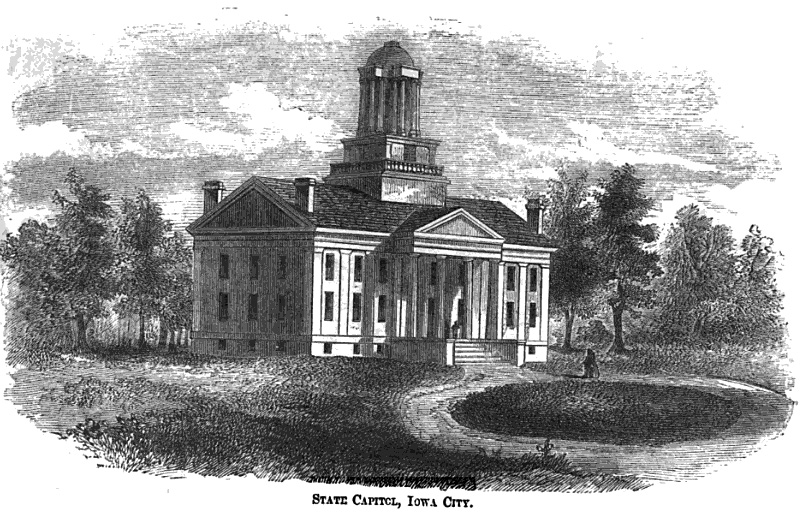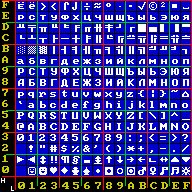|
Syllable (computing)
In computing, a syllable is a name for a platform-dependent unit of information storage. Depending on the target hardware, various bit widths (and sometimes internal groupings) are associated with it. Commonly used in the 1960s and 1970s, the term has mostly fallen into disuse in favour of terms like byte or word. Examples: * 3-bit syllables: some experimental CISC designs * 8-bit syllables: English Electric KDF9 (represented as syllabic octals and also called slob-octals or slobs in this context) and Burroughs large systems (see also: Burroughs B6x00-7x00 instruction set) * 12-bit syllables: NCR computers such as the NCR 315 (also called slabs in this context) and Burroughs large systems * 13-bit syllables: Saturn Launch Vehicle Digital Computer (LVDC) and Gemini Spacecraft On-Board Computer (OBC) See also * Byte * Catena (computing) * Instruction syllable * Nibble * Opcode In computing, an opcode (abbreviated from operation code, also known as instruction mac ... [...More Info...] [...Related Items...] OR: [Wikipedia] [Google] [Baidu] |
Bit Width
Bit-length or bit width is the number of binary digits, called bits, necessary to represent an unsigned integer as a binary number. Formally, the bit-length of a natural number n \geq 0 is :\ell(n) = \lceil \log_2(n+1) \rceil where \log_2 is the binary logarithm and \lceil \cdot \rceil is the ceiling function. At their most fundamental level, digital computers and telecommunications devices (as opposed to analog devices) process data that is encoded in binary format. The binary format expresses data as an arbitrary length series of values with one of two choices: Yes/No, 1/0, True/False, etc., all of which can be expressed electronically as On/Off. For information technology applications, the amount of information being processed is an important design consideration. The term bit-length is technical shorthand for this measure. For example, computer processors are often designed to process data grouped into words of a given length of bits (8 bit, 16 bit, 32 bit, 64 bit, etc.). ... [...More Info...] [...Related Items...] OR: [Wikipedia] [Google] [Baidu] |
Gemini Spacecraft On-Board Computer
The Gemini Guidance Computer (sometimes Gemini Spacecraft On-Board Computer (OBC)) was a digital, serial computer designed for Project Gemini, America's second human spaceflight project. The computer, which facilitated the control of mission maneuvers, was designed by the IBM Federal Systems Division.8. J. C. Hundley and R. A. Watson, "A Digital Computer in Orbital Flight," TR 63-825-892, IBM Federal Systems Division, Owego, New York, October 1964. Functionality Project Gemini was the first with an on-board computer, as Project Mercury was controlled by computers on Earth. The Gemini Guidance Computer was responsible for the following functions:McDonnell Corporation, NASA Project Gemini Familiarization Manual, 1965, vol. 2, pp. 8.7,8.45. * ''Ascent ''– serves as a backup guidance system. The switchover is manually controlled by the astronauts * ''Orbital flight'' – provides a navigation capability to the astronauts to determine the time of retrofire and to select the land ... [...More Info...] [...Related Items...] OR: [Wikipedia] [Google] [Baidu] |
Springer Fachmedien Wiesbaden GmbH
Springer Science+Business Media, commonly known as Springer, is a German multinational publishing company of books, e-books and peer-reviewed journals in science, humanities, technical and medical (STM) publishing. Originally founded in 1842 in Berlin, it expanded internationally in the 1960s, and through mergers in the 1990s and a sale to venture capitalists it fused with Wolters Kluwer and eventually became part of Springer Nature in 2015. Springer has major offices in Berlin, Heidelberg, Dordrecht, and New York City. History Julius Springer founded Springer-Verlag in Berlin in 1842 and his son Ferdinand Springer grew it from a small firm of 4 employees into Germany's then second largest academic publisher with 65 staff in 1872.Chronology ". Springer Science+Business Media. In 1964, Springer expanded its business internationally, ... [...More Info...] [...Related Items...] OR: [Wikipedia] [Google] [Baidu] |
Association For Computing Machinery
The Association for Computing Machinery (ACM) is a US-based international learned society for computing. It was founded in 1947 and is the world's largest scientific and educational computing society. The ACM is a non-profit professional membership group, claiming nearly 110,000 student and professional members . Its headquarters are in New York City. The ACM is an umbrella organization for academic and scholarly interests in computer science ( informatics). Its motto is "Advancing Computing as a Science & Profession". History In 1947, a notice was sent to various people: On January 10, 1947, at the Symposium on Large-Scale Digital Calculating Machinery at the Harvard computation Laboratory, Professor Samuel H. Caldwell of Massachusetts Institute of Technology spoke of the need for an association of those interested in computing machinery, and of the need for communication between them. ..After making some inquiries during May and June, we believe there is ample interest to ... [...More Info...] [...Related Items...] OR: [Wikipedia] [Google] [Baidu] |
The University Of Iowa
The University of Iowa (UI, U of I, UIowa, or simply Iowa) is a public research university in Iowa City, Iowa, United States. Founded in 1847, it is the oldest and largest university in the state. The University of Iowa is organized into 12 colleges offering more than 200 areas of study and seven professional degrees. On an urban 1,880-acre campus on the banks of the Iowa River, the University of Iowa is classified among "R1: Doctoral Universities – Very high research activity". In fiscal year 2021, research expenditures at Iowa totaled $818 million. The university is best known for its programs in health care, law, and the fine arts, with programs ranking among the top 25 nationally in those areas. The university was the original developer of the Master of Fine Arts degree and it operates the Iowa Writers' Workshop, which has produced 17 of the university's 46 Pulitzer Prize winners. Iowa is a member of the Association of American Universities, the Universities Research ... [...More Info...] [...Related Items...] OR: [Wikipedia] [Google] [Baidu] |
Word (computer Architecture)
In computing, a word is the natural unit of data used by a particular processor design. A word is a fixed-sized datum handled as a unit by the instruction set or the hardware of the processor. The number of bits or digits in a word (the ''word size'', ''word width'', or ''word length'') is an important characteristic of any specific processor design or computer architecture. The size of a word is reflected in many aspects of a computer's structure and operation; the majority of the registers in a processor are usually word-sized and the largest datum that can be transferred to and from the working memory in a single operation is a word in many (not all) architectures. The largest possible address size, used to designate a location in memory, is typically a hardware word (here, "hardware word" means the full-sized natural word of the processor, as opposed to any other definition used). Documentation for older computers with fixed word size commonly states memory sizes in words ... [...More Info...] [...Related Items...] OR: [Wikipedia] [Google] [Baidu] |
Syllable
A syllable is a unit of organization for a sequence of speech sounds typically made up of a syllable nucleus (most often a vowel) with optional initial and final margins (typically, consonants). Syllables are often considered the phonological "building blocks" of words. They can influence the rhythm of a language, its prosody, its poetic metre and its stress patterns. Speech can usually be divided up into a whole number of syllables: for example, the word ''ignite'' is made of two syllables: ''ig'' and ''nite''. Syllabic writing began several hundred years before the first letters. The earliest recorded syllables are on tablets written around 2800 BC in the Sumerian city of Ur. This shift from pictograms to syllables has been called "the most important advance in the history of writing". A word that consists of a single syllable (like English ''dog'') is called a monosyllable (and is said to be ''monosyllabic''). Similar terms include disyllable (and ''disyllabic''; ... [...More Info...] [...Related Items...] OR: [Wikipedia] [Google] [Baidu] |
Parcel (computing)
In computing and telecommunications, a unit of information is the capacity of some standard data storage system or communication channel, used to measure the capacities of other systems and channels. In information theory, units of information are also used to measure information contained in messages and the entropy of random variables. The most commonly used units of data storage capacity are the bit, the capacity of a system that has only two states, and the byte (or octet), which is equivalent to eight bits. Multiples of these units can be formed from these with the SI prefixes (power-of-ten prefixes) or the newer IEC binary prefixes (power-of-two prefixes). Primary units In 1928, Ralph Hartley observed a fundamental storage principle, which was further formalized by Claude Shannon in 1945: the information that can be stored in a system is proportional to the logarithm of ''N'' possible states of that system, denoted . Changing the base of the logarithm from ''b'' to a diff ... [...More Info...] [...Related Items...] OR: [Wikipedia] [Google] [Baidu] |
Opstring
In computing, an opcode (abbreviated from operation code, also known as instruction machine code, instruction code, instruction syllable, instruction parcel or opstring) is the portion of a machine language instruction that specifies the operation to be performed. Beside the opcode itself, most instructions also specify the data they will process, in the form of operands. In addition to opcodes used in the instruction set architectures of various CPUs, which are hardware devices, they can also be used in abstract computing machines as part of their byte code specifications. Overview Specifications and format of the opcodes are laid out in the instruction set architecture ( ISA) of the processor in question, which may be a general CPU or a more specialized processing unit. Opcodes for a given instruction set can be described through the use of an opcode table detailing all possible opcodes. Apart from the opcode itself, an instruction normally also has one or more specifiers for ... [...More Info...] [...Related Items...] OR: [Wikipedia] [Google] [Baidu] |
Opcode
In computing, an opcode (abbreviated from operation code, also known as instruction machine code, instruction code, instruction syllable, instruction parcel or opstring) is the portion of a machine language instruction that specifies the operation to be performed. Beside the opcode itself, most instructions also specify the data they will process, in the form of operands. In addition to opcodes used in the instruction set architectures of various CPUs, which are hardware devices, they can also be used in abstract computing machines as part of their byte code specifications. Overview Specifications and format of the opcodes are laid out in the instruction set architecture (ISA) of the processor in question, which may be a general CPU or a more specialized processing unit. Opcodes for a given instruction set can be described through the use of an opcode table detailing all possible opcodes. Apart from the opcode itself, an instruction normally also has one or more specifiers ... [...More Info...] [...Related Items...] OR: [Wikipedia] [Google] [Baidu] |
Nibble
In computing, a nibble (occasionally nybble, nyble, or nybl to match the spelling of byte) is a four-bit aggregation, or half an octet. It is also known as half-byte or tetrade. In a networking or telecommunication context, the nibble is often called a semi-octet, quadbit, or quartet. A nibble has sixteen () possible values. A nibble can be represented by a single hexadecimal digit (–) and called a hex digit. A full byte (octet) is represented by two hexadecimal digits (–); therefore, it is common to display a byte of information as two nibbles. Sometimes the set of all 256-byte values is represented as a table, which gives easily readable hexadecimal codes for each value. Four-bit computer architectures use groups of four bits as their fundamental unit. Such architectures were used in early microprocessors, pocket calculators and pocket computers. They continue to be used in some microcontrollers. In this context, 4-bit groups were sometimes also called ''characters' ... [...More Info...] [...Related Items...] OR: [Wikipedia] [Google] [Baidu] |



